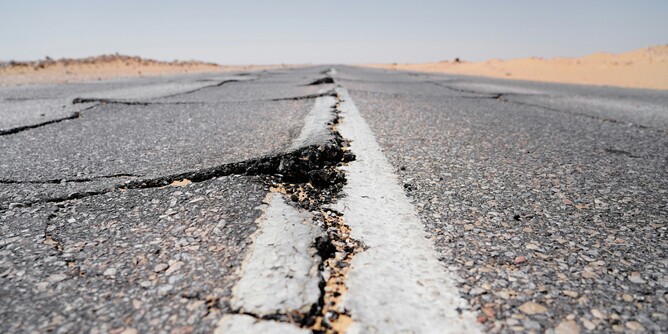Almost every week another building, usually in Wellington, is evacuated because it’s deemed ‘Earthquake Prone’ and either covered in plastic sheeting or left to rot, while the hapless owners consider how they’ll afford the repairs and strengthening that the engineers have mandated. This week for a change it was the turn of the South Island’s largest high school Burnside High in Christchurch.
The Wellington City Council’s 2027 deadline for remediation is approaching fast and parts of our city resemble a rotting ghost town. Meanwhile, the Council continues pouring tens of millions of dollars into rebuilding the Town Hall that has been closed for a decade. The cumulative cost of all the required repairs runs into billions. There’s even a suggestion that the Council may demolish one of the city’s remaining quality venues, the iconic Michael Fowler Centre (MFC), in preference to yet more costly repairs.
All for what? The answer’s simple, you say: “People could die.”
Yes, of course they could, if a massive earthquake struck at exactly one of the few times each year when the MFC is full.
I do not subscribe to conspiracy theories, and I don’t believe there’s a deliberate co-ordinated strategy to impose this huge financial burden, not to mention mental stress, on property owners.
However, I do see an unfortunate alignment of interests:
If an engineer is asked to inspect a building for structural integrity, professional pride must almost dictate that they find something. Which 10, 20 or 50 year old structure doesn’t have some fault, or design aspect that doesn’t meet the latest building standard?
The well-intentioned City Council, acting on this advice from the engineer, can act with concern for people’s safety by telling them they mustn’t enter, while – better still for the City Managers – they force the cost on to the building owner, in other words, spending other people’s money.
Thirdly, which builder, the beneficiary of this endless flow of welcome repair and rebuild business will step out of line to say the work isn’t needed?
Everyone concerned, except the blighted landlord, is incentivised to perpetuate the cycle.
Let’s look at a few other relevant facts.
How many people have died in earthquakes in New Zealand since we started keeping nationwide records, about 200 years ago? No, not thousands – about 500 in total – the vast majority in only two events, the 1931 Hawkes Bay earthquake, and the 2011 Christchurch earthquake, 13 years ago. In the latter, which is seared on our memories, almost two thirds of the 190 victims died in the unfit-for-purpose CTV building, which, by all accounts, had never been properly designed or adequately inspected, and pan-caked dramatically.
In comparison to this tally, fewer than 2.5 deaths per year on average, every year about 700 people decide tragically to end their own lives, while more than 300 die on our roads. The big difference between earthquakes and these heartbreaking events is that the latter usually take only one or two lives at a time, seldom becoming newsworthy, but no less devastating for the individuals and families involved.
It’s easy to talk about the possible consequence, or impact, of a dramatic earthquake – similarly to how people think about the possibility of a catastrophic Airbus crash and the loss of hundreds of lives.
What we often ignore is the other ‘axis’ of risk – the likelihood or probability of the event. On most days, even those airlines with the world’s worst safety records offload as many passengers safely at their destinations as they’ve welcomed at the start of their flights. (IATA’s 2022 report on passenger fatalities calculated that on average you’d need to take a flight every day for 25,214 years to experience a 100% fatal accident.)
Yet some people are still terrified of flying.
Isn’t it time we started to think of seismic risk in the same way:
Severity? Yes, potentially very high;
Probability? Well, 200 years of experience should be evidence enough.
New Zealand’s very strict building standards are designed to save lives, not property, and they’ve shown time and again that they do that. Perhaps it’s time to press ‘Pause’ on ‘Earthquake Prone’ and take a rational look at the real risks.
Then we could consider how many more lives could be saved by some rational spending decisions, and stimulate investment in this nation’s future, rather than continually patching up the past.
And, if I’m wrong, you can dig me out of the rubble and say, ‘Told you so.’



